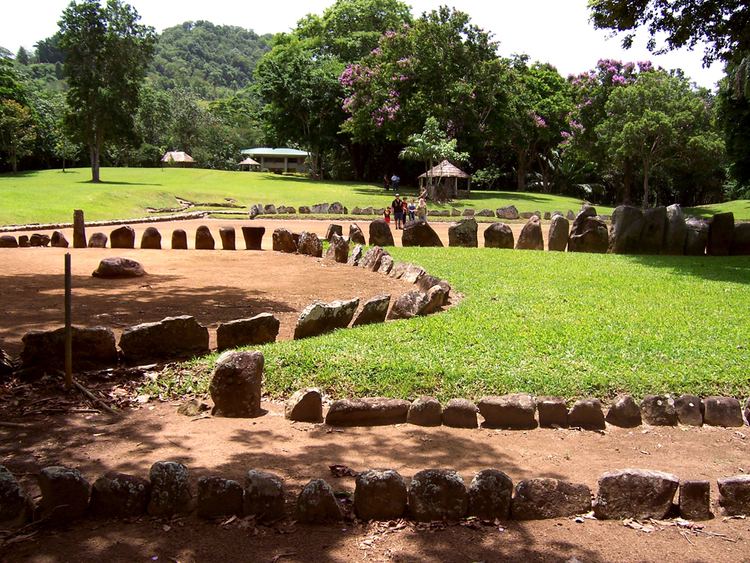Built Around 1270 AD Designated NHL November 4, 1993 Added to NRHP 17 December 1992 | NRHP Reference # 92001671 Area 3 ha | |
 | ||
Location Highway 111, Km 12.3Utuado, Puerto Rico | ||
Larry caguana
The Caguana Ceremonial Ball Courts Site in barrio Caguana, Utuado, Puerto Rico, is considered one of the most important archeological sites in the West Indies. Studies estimate it is over 700 years old, built by the Taíno around 1270 AD. Approximately 30 ball courts (bateyes) have been identified and many have been restored to their original state. The game of batey is believed to have originated in Mesoamerica and is said to have been played in Cuba, Jamaica, Hispaniola, the Bahamas and the Virgin Islands. Monoliths and petroglyphs carved by the Taínos can be seen among the rocks and stones, some weighing over a ton, that were most likely brought from the Tanama River located adjacent to the site. Also located near the site is the Cemí Mountain (Montaña Cemí) which was believed, by the Taínos, to be the home of their gods and the reason they built the ball courts in that area.
Contents
- Larry caguana
- 2007 08 23 day 05 part b puerto rico rio camuy cave park caguana indian ceremonial center
- References
The Caguana Site most likely served several different functions. First it was used for ceremonial dances, religious rituals and other rites; it was used for playing ball games in which two teams of equal numbers tossed a ball to each other; and third, it is believed to be used to make astronomical observations.
The Institute of Puerto Rican Culture manages the site as a park under the name Caguana Indigenous Ceremonial Center (Centro Ceremonial Indígena de Caguana). The National Park Service has placed it on the National Register of Historic Places, and designated it as a National Historic Landmark (under the name Caguana Site).
The park also includes a small museum containing Taíno artifacts, archaeological exhibits and a botanical garden featuring the plants the Taínos harvested for food, such as sweet potatoes, cassava, corn, and yautía. Many of the trees used by the Taínos to construct their homes (bohíos), such as mahogany and ceiba can be seen throughout the park.
It was listed on the National Register in 1992 and designated a U.S. National Historic Landmark in 1993.
